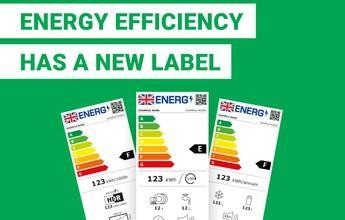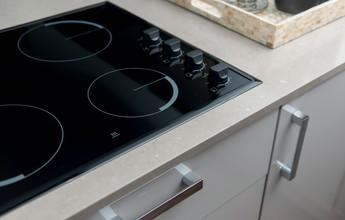
For a quarter of a century, British shoppers have used those familiar energy labels, with their catchy, coloured arrows, to check out the energy efficiency of domestic appliances, taking A as the best rating and G the worst. Recently, however, technology pushed the energy efficiency of the best appliances beyond even the A category, and manufacturers have been using A+, A++ and even A+++ to show that their products are ahead of the game.
It all got very confusing, so the system has been overhauled, and a new version of the label appeared last year, taking it back to straightforward rankings of A to G. The new labels also have a QR code you can scan with your smartphone to get more product details.
WESTON HOMES SCORES AN ‘A’
Appliances fitted by sustainability champion Weston Homes are A-rated and mostly made by Zanussi. A little know-how will help you make the most of them, saving energy, cutting fuel bills, and, of course, your household carbon emissions.
It’s worth making the effort because your kitchen, however efficiently equipped, is still power hungry. The Energy Saving Trust has done the maths for an average UK household. “Wet” appliances (washing machine, dishwasher) use around 16 per cent of a household’s total energy, because of the power needed to heat the water. “Cold” appliances (fridge, freezer) come in next at 12 per cent, because they are on all the time. Cooking uses around four per cent. So in all, a whopping 32 per cent, or just under a third of power, is used in the kitchen.
We’ve collected some handy tips to keep your kitchen energy usage in check.


The hob
Your Weston Homes kitchen comes with a quick-heat ceramic hob with four cooking zones. To save energy:
* Match the size of cooking ring to the pan, and keep surfaces clean.
* Use your Weston Homes fitted boiling-water tap to add cooking water – it is faster and heat conserving.
* Add a lid , with a steam release hole, to pans for faster cooking. Check foods that cook better without a lid i.e. pasta.
* Turn boiling pans down to a simmer.
* Cook different vegetables “stacked” in one double-steamer.
* Turn rings off a few minutes early and use residual heat.
The oven
Your Weston Homes kitchen is fitted with a Zanussi convection (aka fan) oven, which pushes heat around to bring the oven to an even temperature very quickly.
* Using your fan oven, you can reduce your cooking temperature by 10 to 20 degrees (check food labels). And you do not need to heat the oven prior to putting food in for cooking.
* Cooking time is also shortened by up to 25 per cent.
* Learn to use the oven timer for precise control.
* Open your oven door as little as possible during cooking. You’ll be losing as much as 25C of heat every time. Use the glass door for checking – and keep it clean.
* Glass and ceramic dishes store and spread more heat than metal pans.
* Cook as much as possible in the oven in one go. You can use all your oven shelves, as heat is distributed evenly. Consider “batch cooking” extra dishes to use through the week, or to freeze.
The fridge/freezer
* Every time you open your fridge cold air pours out so open as little as possible . The fuller the fridge, the less air escapes. Keeping your fridge two thirds full works best.
* Don’t pack food too tightly in the fridge, air must circulate so food does not over freeze or spoil.
* A freezer works best packed full. Tuck cold packs or extra ice trays/bags for drinks into gaps.
* Check temperatures regularly. Don’t set your fridge lower than 5C; your freezer should be -18C. You can buy a fridge thermometer for under £10 on Amazon.
* Adjust your settings when the seasons change.
* Let foods cool before putting them in the fridge.
The washing machine
* Wash clothes at 30C unless heavily soiled.
* Do a hot wash every so often to clean your machine.
* Wait for a full load but do NOT overload. Leave a hand span clearance at the top of the drum.
* Clean filters regularly.
Your dishwasher
* Scrape plates clean: rinsing is not necessary.
* Always fill and wash a full load.
* Make sure spray arms can rotate freely and nozzles are clear.
* Keep filters clean, and replace correctly for an efficient wash.